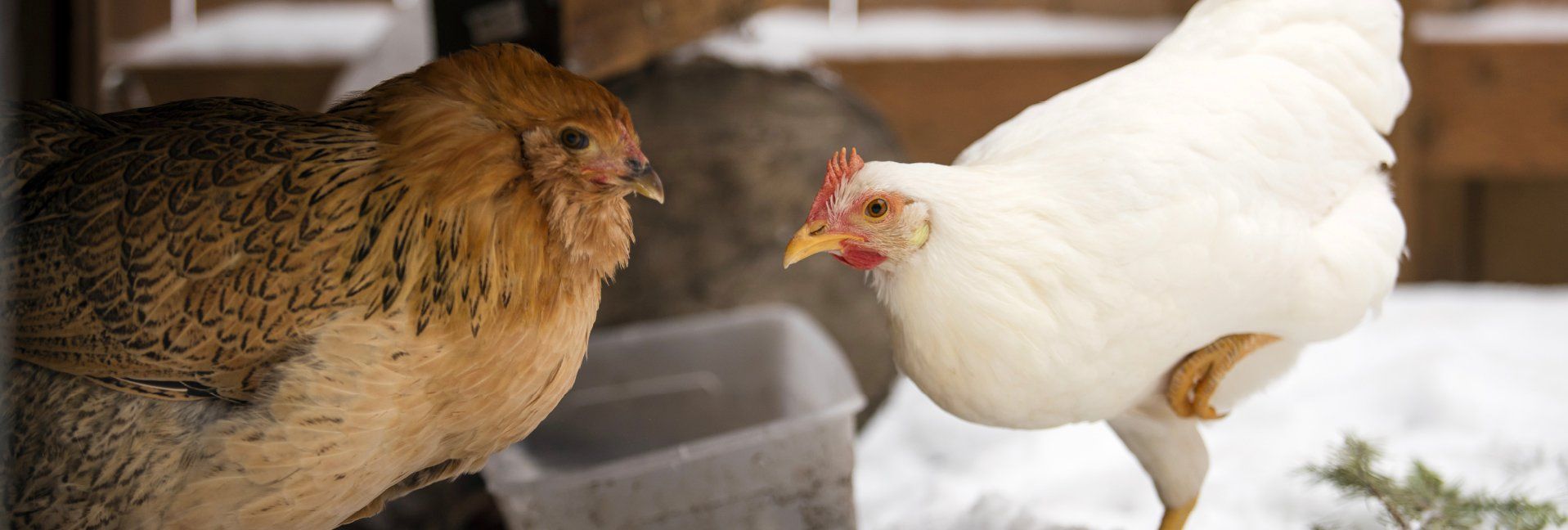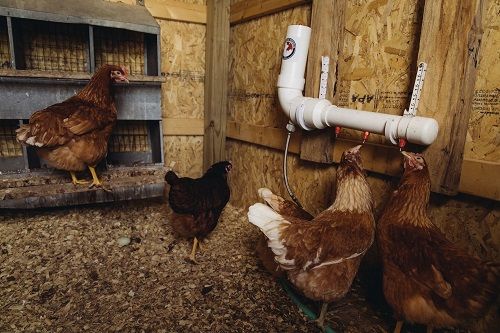The Risks of Too Much Protein


The mantra of many chicken owners is “protein is king.” While in some situations this is not wrong, many times animals are over-fed protein or given the wrong amino acid balance.
What does protein do?
Let’s start with proteins and their general functions in the body. Proteins are specific sequences or groups of amino acids that fit together to build a particular protein.
Proteins have many different functions in the body, including building muscle, DNA replication, cell structure, transportation of other molecules, and enzymes that speed up chemical reactions.
Specific to poultry, proteins form feathers, beak, and toenails. Proteins are three-dimensional structures made of specific sequences of amino acids. These amino acids are derived from proteins that the chicken has consumed or synthesized.
Proteins are broken down during digestion into individual amino acids for transport and use throughout the body. Once absorbed, these amino acids are restructured into proteins that the chicken will need. Now, amino acids are divided into two categories; essential and non-essential.
Essential amino acids are ones that the body either cannot produce or cannot produce in enough supply to meet the demands of the different systems. The remainder of essential amino acids must come from the diet. Of these, lysine and threonine must be supplied completely by the diet.
Non-essential amino acids are ones that the body can produce in sufficient quantity to satisfy demand. Not all proteins contain every amino acid and unfortunately, feeds will almost always only list protein as protein or crude protein and not list as individual amino acids.
So, with regards to dietary needs we need to not focus on protein or crude protein in the diet but to look at the source and whether or not those proteins are supplying the correct amino acids.
Not all proteins are equal
Protein needs will vary from time to time, depending on age and activity level.
Growing chicks and young pullets will need more protein than older mature laying hens. Why?Younger birds are growing in terms of size, muscle, and organs and will therefore need more protein for the development of these systems.
As birds mature and the body moves away from building tissues to maintenance, the protein requirement for these birds will decrease. This is the reason why chick feeds will contain more protein and laying hen feed less.
A question I am often asked is “Why can’t I just feed them extra protein so my chickens can store it or put on more muscle now?”
Well, the short answer is that the body can only digest so much protein at one time and the body cannot store excess protein—the rest is excreted as waste and that waste is deadly.
Have you ever been into a poultry barn or any animal barn for that matter and smelled a very strong ammonia smell? That smell is the result of protein metabolism, the stronger the smell the more ammonia and more wasted protein. Ammonia can cause many health issues including respiratory distress, as well as damage to eyes and trachea.
Excess protein can also lead to increased water consumption, which will lead to wetter litter and bedding areas. Excess moisture in the litter will lead to blisters and burns on feet and skin. If you use your bedding material for fertilizer, the excess nitrogen excreted can pose a serious problem, potentially “burning” your plants and destroying your garden.
Revolting molting practices
Most chicken farmers have learned the basics of feeding protein during early growing stages and during laying, but when it comes to molting things tend to fall apart. A quick internet search for what to do during a molt reveals lots of misinformation about feeding and caring for molting birds, especially regarding protein requirements.
Almost every article or message board I read said to feed them excessive amounts of protein, because feathers are composed of approximately 90% of a protein called keratin. While feathers are mostly protein, cramming a lot of excess protein in the diet is not going to help and could lead to much worse long-term health problems.
As previously mentioned, proteins are comprised of different sequences of amino acids and keratin is no different. A quick search of published research shows that feather keratin is composed of up to 18 different amino acids. In feathers, the major amino acids of arginine, leucine, valine, and threonine are considered essential amino acids in chickens. Together, these amino acids account for roughly 25% of the keratin found in feathers. The remainder of the amino acids in keratin are either non-essential (and readily synthesized by the chicken) or are in small amounts.
In other words, a healthy chicken will be able to readily synthesize most of the amino acids that comprise the keratin in feathers. A feed that has been specifically formulated for chickens will have sufficient protein and correct amino acids to supply the essential amino acids needed for feather production.
The cat food confabulation
One common practice and suggestion that many farmers use is to feed cat food to molting chickens for the extra protein.
While in theory this sounds like a good idea, in reality it is not. First ,remember back to our essential amino acids for chickens—lysine and threonine, followed by leucine, isoleucine, valine, arginine and histidine.
Now let’s take a look at the amino acid requirements for cats. The first two essential amino acids for cats are taurine and arginine, therefore cat food will be formulated to supply the amino acid requirement for cats, which is much different than chickens.
Now, remember the major amino acids requirements for feathers, taurine isn’t even found in feather keratin. Not exactly lining up, is it?
My point here is to remember that not all protein is the same and that we are not feeding for a protein requirement, we feed for an amino acid requirement.
So what’s the right feed balance?
Let’s outline a diet for laying hens from chicks to laying and molting that will focus on protein percentages. The caveat to this feeding plan is that these should come from a diet or feed that is specifically formulated for chickens, as that diet will be made from ingredients that will supply the correct amount of essential amino acids.
- Day-old chickens to pullets six weeks of age should be fed a diet of approximately 20% protein.
- Pullets seven to eighteen weeks of age should be fed 17% to 18% protein.
- After nineteen weeks of age and throughout their egg-laying cycle, hens need about 16% protein.
- Hens or chickens that are molting can be fed an increased amount of dietary protein, up to about 20% and a lower amount of calcium. Again, this should be from a chicken feed with 20% protein—a pre-lay feed for growing pullets will work very well.
Think couch-potato poultry
Now, many times people will say “Well, this is nutrition based on high production hens and isn’t appropriate for my flock.” While these diets are based on the nutritional needs of a high production hen, let’s look at it this way: That high production hen is essentially an elite marathon runner and your chickens might be someone who jogs a few times a week.
The elite marathon runner will have a much greater nutritional demand than the jogger, and the same goes for chickens. The marathon runner is also going to have a team of nutritionists and scientists that have developed a diet designed to meet its increased nutritional needs.
In other words, the diet formulation for the marathon runner is much like the high-production laying hen, and will have a much better and more developed nutritional profile.
I’ll finish by saying that it’s always better to not overthink raising chickens, for the most part with a feed that has been formulated for their age and use (eggs vs. meat) they will do just fine.
About the author
Zac Williams is the poultry extension specialist at Michigan State University since June 2018. He also teaches several undergraduate courses. Previously, he taught at Tennessee Technological University, providing poultry-related classes and outreach for poultry farmers throughout the state. Currently at MSU he is researching ways to improve mass mortality composting.
Tags:Hands-on Help

Chicken Whisperer is part of the Catalyst Communications Network publication family.










